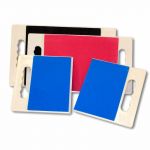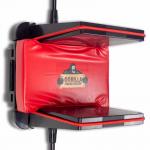Martial Arts Breaking Boards
-
$249.95
Karate breaking boards have been around forever. In traditional martial arts, breaking stuff was how you proved your technique worked. You weren't just swinging your leg around for show. You had to focus, strike with intent, and actually make something break. Over time, martial arts breaking boards became part of belt testing and live demos. It's not just about strength either. You've got to hit the right spot, at the right angle, with the right part of your hand or foot. When it clicks, and the board splits, it feels amazing.
These days, most schools are switching over to rebreakable boards, and honestly, it just makes sense. You don't have to keep buying wooden boards or deal with flying splinters. Rebreakable karate boards are made from heavy-duty plastic that snaps apart when hit with enough force, then pops back together so you can use them again. They're color-coded by difficulty, which makes it super easy to match the board to the student's level. Yellow is great for beginners, blue and red are for intermediate levels, and black is for advanced strikes. You can start light and work your way up without needing a giant stack of wood.
We've also got rebreakable boards with handles, and if you've ever held a board for someone and taken a fist to your fingers, you'll know why that's a game-changer. The handles give you a better grip and more control, which makes the break cleaner and safer. They're especially helpful when you're working with kids or holding for a lot of students back-to-back.
If you're just getting into breaking or want to train without spending a ton, our economy rebreakable boards are a solid choice. They give you the same type of resistance as the higher-end models and hold up surprisingly well for regular training. For anyone working on their form at home or just looking to get better at breaking, they get the job done without draining your wallet.
Taekwondo breaking boards are also big in demo teams and competitions. You'll see all kinds of flashy kicks, jump breaks, spinning back kicks, and combinations. Rebreakable boards are perfect for that kind of training because they let you repeat the same move over and over without running out of boards. You can actually focus on the technique instead of worrying about cleanup.
If you've never trained with break boards before, here's the cool part. They don't just test your strength, they show you where your technique needs work. Miss the center or hold back even a little, and the board won't break. But when you line everything up just right, it splits cleanly and you get that satisfying snap. It's instant feedback and a great way to keep yourself motivated.
Another perk? Way less waste. Wooden boards get used once and tossed. Rebreakable boards can take hundreds of hits and still hold strong. That's good for your budget and way easier to deal with after class. You just pop them back together and go again. For schools with a lot of students, this is a no-brainer.
Sure, they wear out eventually, but they last a long time and give you consistent resistance while they do. And if you're helping someone train, it's way more comfortable to hold one of these than to brace a piece of pine and hope for the best.
How do rebreakable boards work?
Rebreakable boards are made from high-impact plastic with a seam in the middle that allows them to snap apart when hit with enough force. The inside edges are designed to lock together tightly, simulating the feel and resistance of real wooden boards. When you strike the board with proper technique, it splits at the seam, just like a wood board would. The cool part is you can just push the two halves back together and reuse it over and over again. Most rebreakable boards are color-coded by difficulty, so you can gradually work your way up to tougher resistance levels as your technique improves.
What color board should I start with?
Most rebreakable boards are color-coded to represent different levels of difficulty, kind of like martial arts belts. If you're new to breaking or buying for a beginner, start with a yellow board. That's the lightest resistance and works well for kids, younger students, or anyone just getting the hang of striking technique. From there, you can move up to blue, red, and eventually black, which requires serious power and precision. Some people even train across multiple colors depending on the technique they're working on. If you're not sure where to begin, it's better to go easier at first and build confidence before leveling up.
Are rebreakable karate boards safe for kids?
Rebreakable boards are commonly used in youth martial arts classes, and many instructors choose them because they offer consistent resistance and don't splinter like real wood. The color-coding system makes it easy to match the board's strength to the student's age and skill level. That said, all board breaking should be done with proper supervision and instruction. Like any martial arts activity, the key is using good technique and knowing your limits. If you're buying a board for a child to use at home, stick with the lighter-resistance options and always make sure an experienced adult is helping out.
How long do rebreakable boards last?
It really depends on how often they're used and how powerful the strikes are, but most rebreakable boards can handle hundreds of breaks before they start to wear out. Over time, the seam may loosen a bit or the plastic may start to show stress marks, especially if you're using them in a busy dojo or for heavy training. The good news is they last way longer than wooden boards and don't need to be replaced after every use. If you're just using them at home a few times a week, a single board could last you months or even longer.
Do I need someone to hold the board for me?
In most cases, yes. Having someone hold the board gives you the right angle and resistance for a clean break, especially when you're working on kicks or strikes that need proper alignment. If you don't have a partner, you can use a board holder or breaking stand to keep the board in place. Some martial artists even mount boards to heavy bags or padded walls for solo practice. Just make sure whatever you're using holds the board securely so you can focus on technique without worrying about it slipping or bouncing around.
What's the difference between rebreakable boards and wooden boards?
The biggest difference is durability. Wooden boards break once and you're done. Rebreakable boards split at the seam and can be reused over and over, which saves a ton of money and cleanup. They're also more consistent in terms of resistance. Every yellow board feels like every other yellow board, so you know exactly what you're training against. With wood, grain and moisture levels can change how hard the board is to break. Rebreakable boards are also safer, since there's no risk of splinters flying around or jagged edges after the break. For everyday training, most people find rebreakable boards way more practical.
Do the boards get easier to break over time?
Yes, eventually. Rebreakable boards are made to hold up through lots of use, but with repeated breaking, the seam can start to loosen and the plastic might lose some of its resistance. It's not usually a dramatic change, but if you've been using the same board for a while, you might notice it doesn't take quite as much force to break as it did when it was brand new. For schools or instructors running frequent tests or classes, it's a good idea to replace boards once they start feeling too easy or show signs of wear.
What kind of strikes can I use on these boards?
You can use just about any standard striking technique on rebreakable boards. Hand strikes like punches, palm heels, and knifehands are common, especially in karate. If you're training in taekwondo, kicks like front kicks, side kicks, and spinning back kicks are all fair game. Elbow strikes, knee strikes, and even jumping techniques can be used too, depending on your skill level. Just make sure you're using proper form and lining up your body the right way, since rebreakable boards still need clean, focused contact to break effectively.
Are the handled rebreakable boards better than the standard ones?
Handled boards aren't necessarily better, but they can make things a lot easier for the person holding the board. The built-in grips give you more control and help prevent slips, which is especially useful when working with high-level kicks or younger students who need a more stable target. If you're an instructor holding boards all day or you've ever had your fingers clipped during a break, the handles make a big difference. For casual home use, standard boards work just fine, but if you want a little extra comfort and control, the handled version is a solid upgrade.
Do I need to wear gloves or padding when breaking boards?
Most people don't wear gloves or padding when breaking boards, especially in traditional martial arts where barehanded technique is part of the training. That said, if you're new to breaking or working on higher-resistance boards, it's totally fine to wear light gloves or hand wraps for added protection while you build up your form and confidence. Just make sure whatever you're wearing doesn't interfere with your ability to strike cleanly. If you feel any pain during training, take a step back and focus on technique. A clean break shouldn't hurt when done correctly.
How do I know when it's time to replace a rebreakable board?
You'll usually be able to feel it. If the board starts to break too easily or doesn't offer the same resistance it used to, it's probably worn out. Over time, the seam can get loose or the plastic might start to warp slightly from repeated impact. You might also notice small cracks forming near the edges or the two halves not snapping together as tightly as they should. When that happens, it's time for a replacement. A worn board won't give you the same training feedback, and you don't want to build bad habits by practicing on something that no longer challenges you.
RECENTLY VIEWED





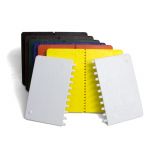


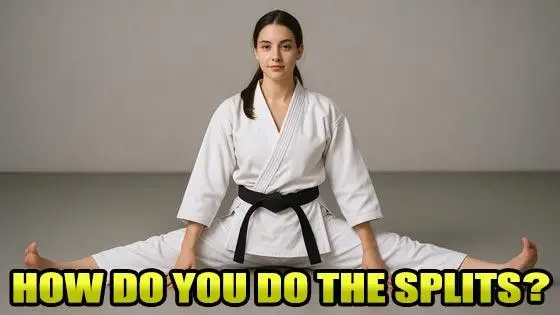

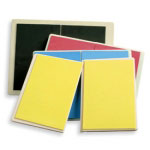
 (5)
(5)

 (1)
(1)